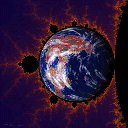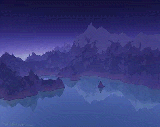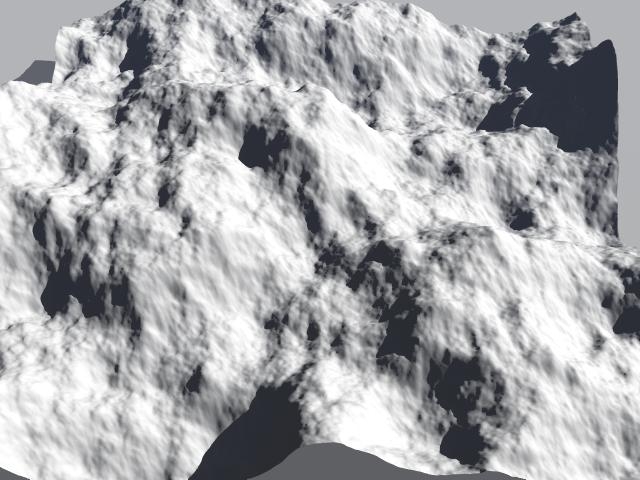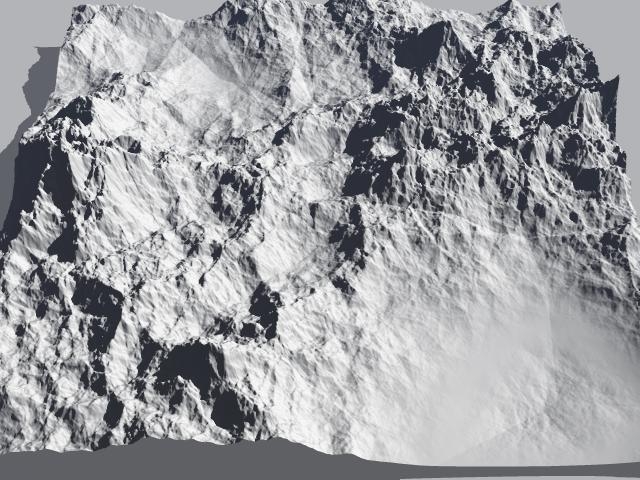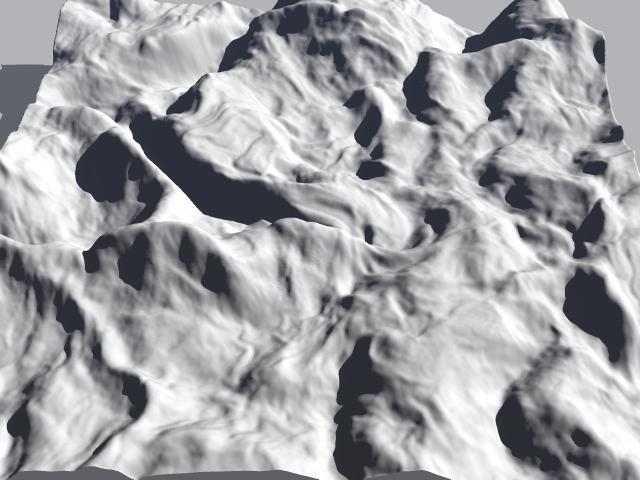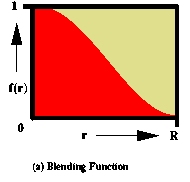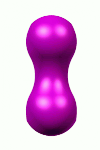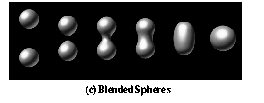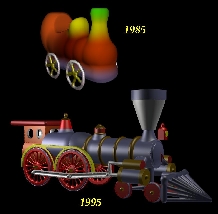CMSC 635 Spring 1999 - Advanced Modeling

CMSC 635: Advanced Computer Graphics
Introduction to Advanced Modeling Techniques
Spring 1999
David S. Ebert
Computer Science and Electrical Engineering Department
University of Maryland, Baltimore County
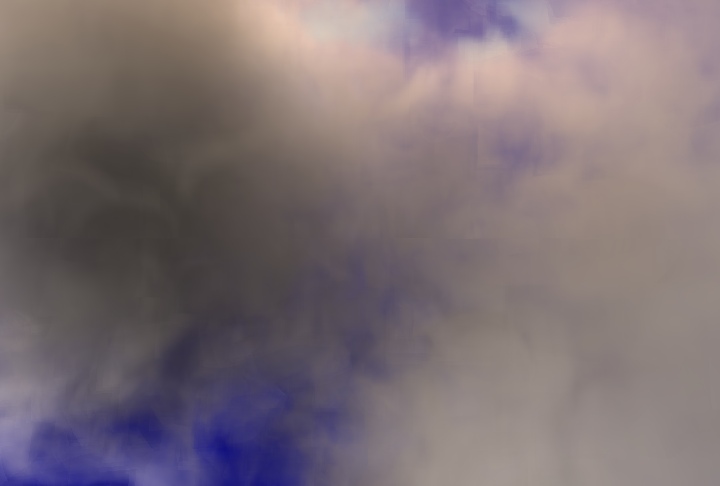
Traditional Geometric Representations
-
Polygonal Models
- Spline Patch Models
- Subdivision Surfaces (Catmull-Clark, etc.)
Advanced Modeling Techniques
Fractals:
L-systems
-
Authors: Lindemyer & Prusinkiewicz, Alvy Ray Smith, Fowler
-
Rule based grammers for describing natural objects
-
Great for plants, trees, shells
-
Example:
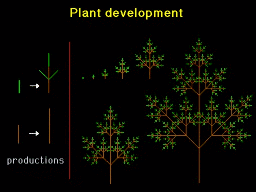
-
Simple Example of a another tree created by the following production
rule:
a -> a[+a]a[-a-a]a
with initial axiom a

-
All rules applied simultaneously.
-
Also probabilistic and context-sensitive L-systems.
-
Most recent work is on Open L-systems that react to their environment.
-
See also the work by Prusinkiewicz
& Hammel
- Examples
Green coneflower. Copyright © 1992 D. Fowler,
P. Prusinkiewicz, and J. Battjes.
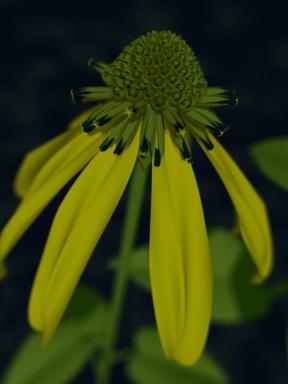
A Horsechestnut tree model with branches competing for access to
light, R. Mech and P. Prusinkiewicz. Copyright © 1996
P. Prusinkiewicz.
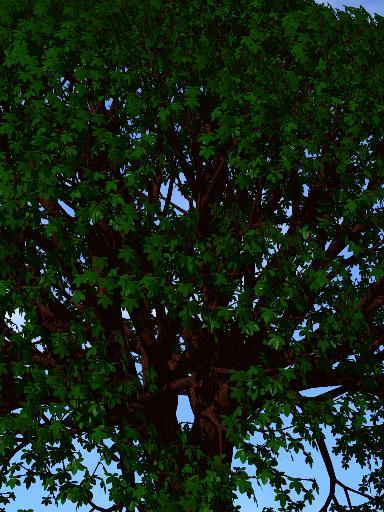
A model of coniferous trees competing for light. The trees are shown in the
position of growth. R. Mech and P. Prusinkiewicz. Copyright © 1996
P. Prusinkiewicz.
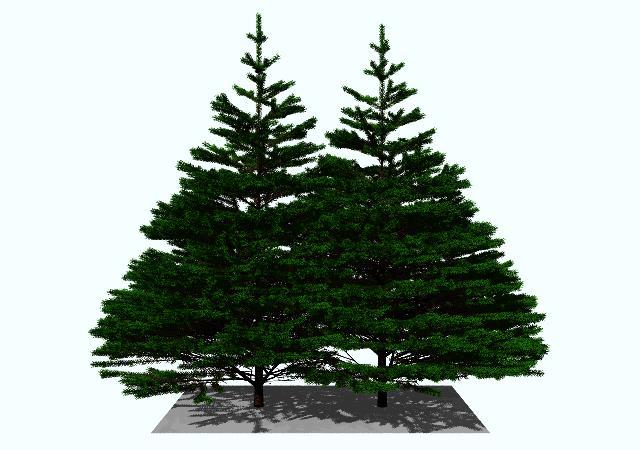
A model of coniferous trees competing for light. The trees are moved
apart from the position of growth. R. Mech and
P. Prusinkiewicz. Copyright © 1996 P. Prusinkiewicz.
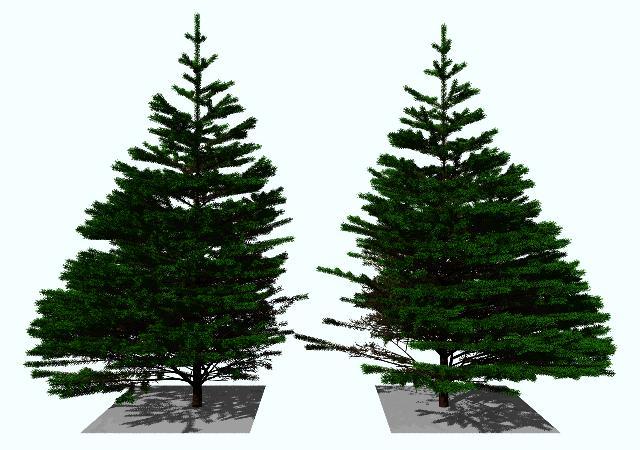
Particle Systems

Image from Star Trek II: The Wrath of Khan by
Pixar, copyright © 1987 Pixar.
What are Particle Systems?
A large collection of (normally) very simple
geometric particles that change stochastically over time.
Introduced to computer graphics by Bill Reeves in 1983
Allow a few parameters to control a complex, dynamical system
(data amplification)
An example of procedural animation --
animation, location, movement, birth, and death of
parcticles are all controlled algorithmically.
Commonly used to represent natural phenomena, such as steam,
smoke, fire, water, snow, rain.
Three main components of a particle system:
- particle representation and geometry
- particle dynamics
- particle rendering
Particle Attributes (Representation and Data
Structures)
- geometry /shape (radius)
- color
- opacity
- position (initial)
- velocity
- lifetime
Particle Dynamics
Governs how the particles move from frame to frame
Often represented as forces
-
- Gravity
-
- Air resistance
-
- Attraction
-
- Repulsion
-
- Collision (with objects only)
-
- Wind Fields
-
- Turbulence Fields
-
- Stochastic functions
-
- Vortices (Sims 90)
-
- Navier-Stokes Flow equations
Particle Rendering
Problems because of the large number of primitives
(hundreds of
thousands to millions
Simple Method:
-
- Consider each particle as a point (linear if motion-blurred)
light source.
-
- The color of the particle is constant and unshaded.
-
- Accumulate the contribution of each particle into the
frame-buffer
-
- composite with the normally rendered scene.
-
- No occlusion, no inter-particle illumination
Structured Particle Systems (Reeves and Blau 85)
-
- Probabilistic rendering techniques to speed rendering.
-
- Perform hidden surface removal, illumination, and shadowing for
the particles.
-
- Usually modeling stochastic phenomena, so rendering can be
- approximately correct.
-
- Perform approximate/probabilistic illumination.
- (e.g., distance into tree from light
source determines diffuse shading
- and probability of having specular highlights, etc.)
-
- Perform approximate/probabilistic shadowing -
- exponentially decrease ambient illumination
as depth into structure increases.
-
- External shadowing also probabilistically approximated.
-
- For hidden-surface removal, use a painters algorithm along
- with a depth-bucket sort of particles.
- Won't be correct in all cases, but
approximately correct.
- Example from Andre and Wally B (Pixar)

- Example from Road to Point Reyes (Pixar)
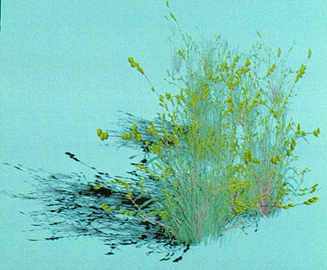
Particle System Operation
- New particles are generated and assigned initial attributes
- Particles past their lifetime are removed
- All remaining particles are updated based on dynamics and
procedures
- Particles are rendered, often using special purpose algorithms
Advanced Particle Systems
- Structured Particle Systems
- Particles form a connected, cohesive 3D object and have
inter-particle relationships.
- Used to model trees, plants, etc., so similar to probabilistic,
context-sensitive L-systems
- Unlike L-systems, goal is to model appearance of collections of
trees, plants, etc.
- Construct trees, by recursively generating sub-branches with
stochastic variation of parameters.
- Therefore, a few parameters generate an entire forest.
- Each particle represents an element (branch, blade of grass,
etc.)
- Cloth dynamics based on particle systems (Breen 1994, Maya cloth,
Witkin and Baraff 1998)
- Surface modeling with oriented particle systems (Szeliski and
Tonnenson)
- Complex geometry and implicits attached to particles - clouds,
etc. (Ebert, Stam)
Common Issues
- Rendering still difficult
- Inter-particle interactions - how to efficiently handle this
- How much physics vs. how much user control
- The perilous power of
parameterization
Diffusion Limited Aggregation (DLA)
-
Natural process hypothesized to describe how many natural things form,
including dendrite clusters to the formation of galaxies.
-
Based on random walks (fBm motion) of particles.
-
Several initial sticky particles are placed in space.
-
A large number of additional particles are moved on random walks;
-
if they touch one of the sticky particles, they stick and may become sticky
also.
See also Rick
Parent's chapter on Particle Animation
Procedural Models
-
Authors: Ebert, Perlin, Hart, Musgrave
-
Use algorithms, code segments, procedure to define the geometry of your
object.
-
Add as much physics or art as you want
-
Advantages: flexibility, data amplification, procedural abstraction.
-
Examples:
-
Volume
metaball Cloud
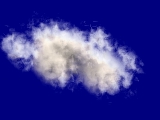 This image is a volume rendered and procedural altered metaball. The image
has low-albedo gas illumination and atmospheric attenuation.
This image is a volume rendered and procedural altered metaball. The image
has low-albedo gas illumination and atmospheric attenuation.
-
My
version of the blizzard of '96
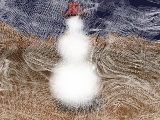 This image shows how metaballs, volume swirling snow, and polygonal models
can be combined to produce great images. You could say that during the
blizzard I created a virtual snowman and my own blizzard.
This image shows how metaballs, volume swirling snow, and polygonal models
can be combined to produce great images. You could say that during the
blizzard I created a virtual snowman and my own blizzard.
Implicit Models
Return to CMSC 635 Notes Page


